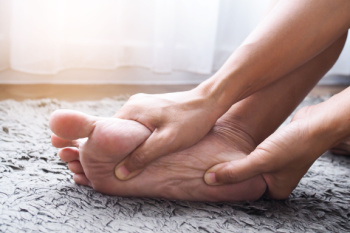Bunions are a common condition that can cause pain and discomfort, often impacting daily activities. There is a genetic link, meaning if bunions run in your family, you may be at higher risk. Understanding this connection can help you take steps to care for your feet and reduce the chances of severe symptoms. Proper foot care and early intervention are key to managing and preventing bunion-related issues.
Understanding Bunions
A common foot condition that can affect people of all ages is bunions. A bunion is a bony bump that forms at the base of the big toe, medically known as hallux valgus. They develop when the big toe shifts toward the other toes, causing the joint to protrude. This misalignment leads to the noticeable bump associated with bunions. Symptoms can vary from mild discomfort to severe pain and difficulty wearing shoes.
Genetics and Bunions
Research shows that bunions often run in families, with genetic factors playing a significant role. Studies estimate that genetics account for about 70% of bunion development. This means your inherited foot structure could be a factor in your risk for bunions.
Certain traits, like foot length, width, arch height, and bone structure, are determined by your genes. Joint alignment and tendon strength also play a role in bunion susceptibility. These inherited characteristics make some individuals more prone to developing bunions.
The combination of genetic predispositions and joint stress helps explain why bunions tend to appear in certain families. Recognizing these genetic influences helps identify individuals at higher risk. This knowledge may also inform prevention strategies for those prone to bunions.
Environmental Factors
While genetics plays a significant role in bunion development, environmental factors also contribute to the condition. The interaction between genetic predisposition and environmental influences determines whether someone will actually develop this condition. Wearing ill-fitting shoes, such as those with narrow toe boxes or high heels, can accelerate bunion development in genetically predisposed people. Poor footwear choices alone rarely cause bunions in individuals without this predisposition. Certain activities and occupations that place repeated stress on the feet, such as ballet dancing, may trigger bunion development when combined with genetic factors.
Other contributing factors include age and gender, which influence bunion development but are not directly genetic. Women are more likely to develop bunions than men, and the condition becomes more common with age. These factors often work in tandem with genetics to determine the likelihood of developing bunions.
Prevention and Management
Understanding your genetic risk for bunions can help you take steps to protect your foot health. If this condition runs in your family, early intervention may help prevent discomfort and long-term complications. Monitoring your feet for early signs of bunion development allows for more effective management strategies. Choosing footwear with adequate toe room and proper arch support can also make a difference, especially if you are predisposed to bunions. Consulting a podiatrist or orthopedic specialist can provide personalized advice based on your specific risk factors, helping you take preventive measures tailored to your needs.
Moving Forward
Genetic research is uncovering markers associated with bunion development, paving the way for better prevention and treatment options. Knowing your genetic predisposition helps you make informed choices about foot care. While you can’t change your genes, proper foot care and minimizing risk factors can help maintain healthy feet. If bunions run in your family, wearing appropriate footwear and seeking professional guidance may reduce your risk or lessen their impact.
- Choosing the Right Plastic Surgeon for Your Cosmetic Procedure
- Understanding Different Types of Laser Treatments for Skin Rejuvenation
- Why a Family Dentist is Key for Maintaining Oral Health
- The Benefits of Regular Visits to a Wellness Spa
- Exploring the Emotional and Psychological Triggers of Eating Disorders


Leave a Reply